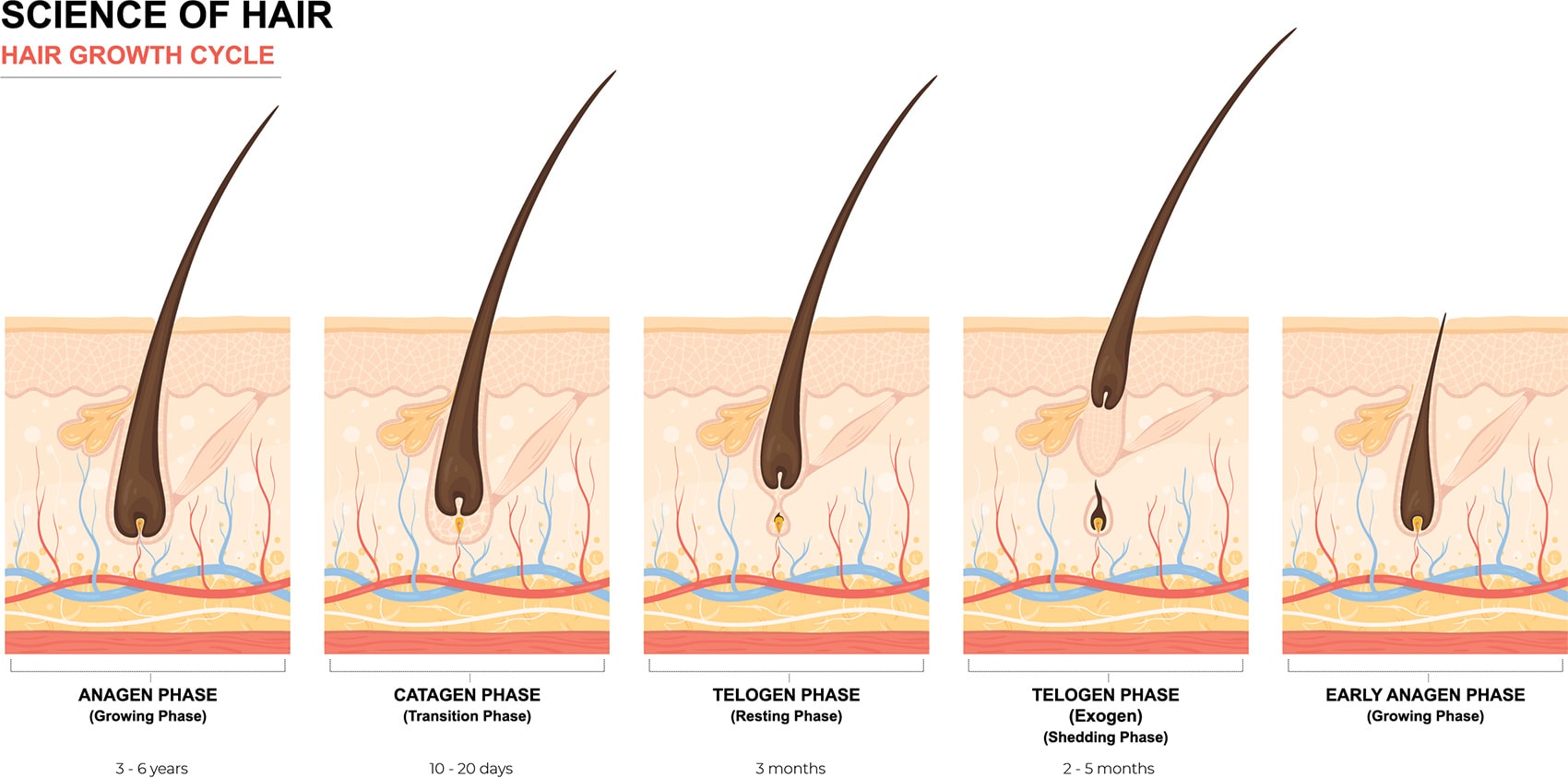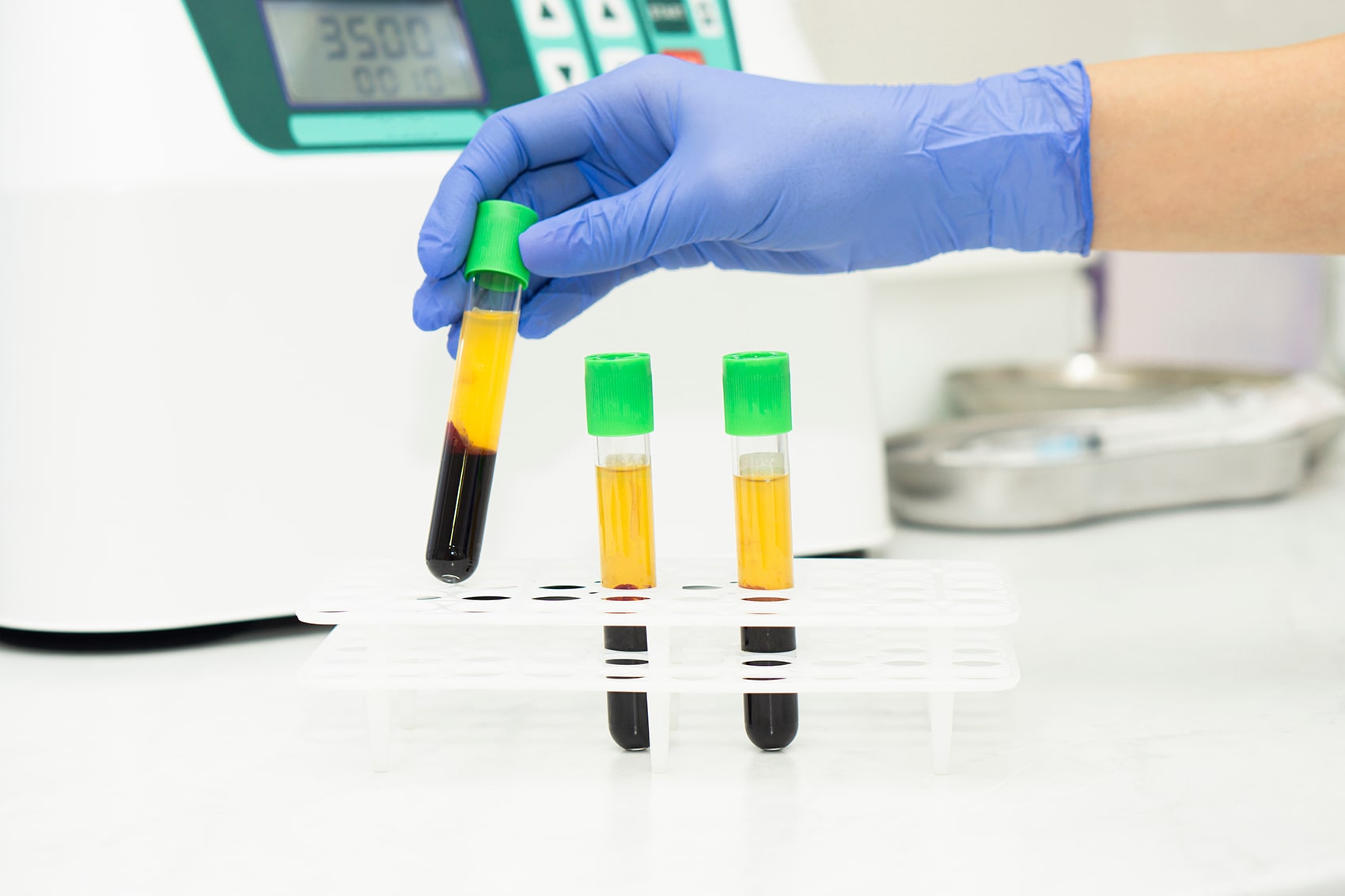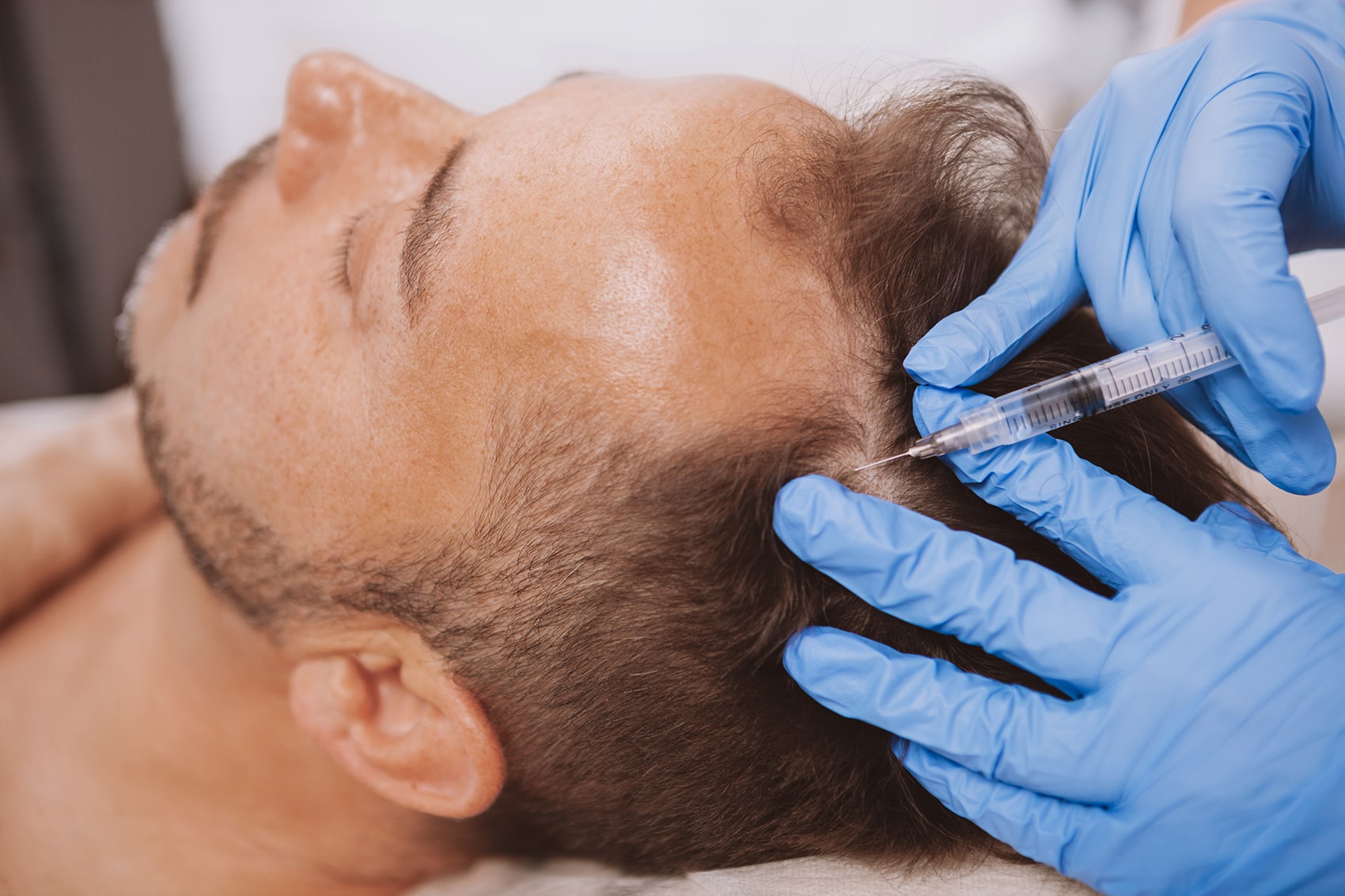Why do we lose Hair?
As we age, the hair follicles’ quality can diminish, with strands becoming finer and thinner. The rate of hair growth slows and ageing hair follicles stop producing thick, healthy hair, or eventually, any hair at all.
It’s normal to lose between 50 – 100 strands of hair a day. When shedding occurs quicker than new hair can grow, you will start to notice the first signs of hair loss.
There are four stages of the hair growth cycle. The first three phases — anagen, catagen, and telogen — cover the growth and maturation of hair and the activity of the hair follicles that produce individual hairs. During the final, or exogen, phase, “old” hair sheds, though usually, a new hair is getting ready to take its place.
The gradual thinning of the hair is caused by a shortened cycle of hair growth, known as the anagen phase, which leads to a higher rate of fallout and thinning of your hair follicles. Remaining hairs stay in the resting period, known as the telogen phase, but get shed more quickly than normal. Gradually, the hairs not only to become thinner, but also to become shorter due to the shortened anagen (growth) phase.

What is PRP?
PRP (Platelet Rich Plasma) hair restoration is a treatment geared towards regenerating existing hair follicles. PRP stimulates inactive or newly implanted hair follicles into an active growth phase allowing them to produce thicker, healthier strands, prolong the life of the hair strands and activate dormant hair follicles.
PRP is a natural therapy for hair loss which involves taking a small quantity of blood from the patient, which is then treated in a centrifuge to separate out the growth factors and bioactive proteins in the blood (which initiate and speed up tissue repair and regeneration).

The platelet-rich plasma, also known as “liquid gold” contains growth factors (such as TGF-beta, PDGF-AB, bFGF, IGF, VEGF, and EGF) and bioactive proteins (globulin, albumin, fibrinogen), nutrients, vitamins, hormones as well as electrolytes. The high concentration of growth factors, platelets and proteins can stimulate hair root rejuvenation and cell regeneration which promotes hair growth, increases the cell growth of hair follicles and prevents hair loss.
All of that helps accelerate tissue repair and regeneration, along with the promotion of hair growth.
The PRP hair treatment uses a combination of both injections and microneedling to insert the platelet rich plasma into the scalp, to encourage hair growth whilst also improving the density of existing hair.
In recent years, several scientific studies and clinical trials have shown that the high concentration of platelets in plasma is efficient to regrow hair in both men and women suffering from excessive hair loss, hair thinning, and pattern baldness.
Who is suitable for PRP?
PRP is not a cure for conditions that cause hair loss. It will also not be effective if the hair follicles are no longer present. The treatment works best for treating thinning hair, slowing or stopping the progression of hair loss and promoting hair growth after hair transplant. PRP cannot bring dead hair follicles back to life. Therefore, if you have lost hair for some time, it is unlikely that PRP will be effective. The treatment is most effective when you first start noticing hair thinning. The earlier you seek treatment the better the outcome.
PRP is suitable to treat the following:
- Anyone with thinning hair
- Anyone suffering from excessive hair loss
- Anyone who want to strengthen existing hair follicles even if there is no excessive hair loss
- Anyone looking for a natural, non-invasive hair growth treatment
- Women who notice hair loss post-pregnancy
- Women who notice a hair change following the menopausal period.

When will you see Results?
Due to the cycle of hair growth, improvements are generally seen within 90 days, with hair growth continuing to improve in some patients over 6 months. There are no guarantees with the treatment and if you have not noticed any improvement within 6 months then it is unlikely you will benefit from the treatment.
Response to PRP will differ between patients. However, when successful the treatment provides long-lasting results. The quality of your plasma will affect the results and therefore results can be affected if you have a poor diet and lifestyle. It is suggested to follow a healthy diet and not smoke as long as you can/should as this affects the quality of your plasma.
4 sessions, 6 weeks apart are advised to start the treatment (although this will vary depending on the stage of your hair loss) and maintenance sessions are recommended every six to twelve months to continue producing positive results.
PRP is an excellent standalone treatment if you are suffering from hair loss and can also be used in conjunction with other treatments such as hair transplants.
Are there any side effects from the Treatment?
No significant side effects have been reported with PRP as the treatment is a natural treatment using your own blood and the treatment is performed under sterile conditions.
You may experience slight inflammation/bruising at the injection site and the scalp may be a little itchy for a few hours after the treatment. However, there is no downtime after this treatment and you can return to your normal activities. You will be advised not to wash their hair on the day of the treatment.
Hair loss can have a huge impact on your confidence. Losing excessive hair can be very distressing but thankfully PRP can potentially be a good option and is one of the most popular non-invasive hair loss treatments on the market today.
Prior to your treatment you will have a free consultation to determine if you are a suitable candidate for the treatment. Please get in touch if you wish to book a consultation or have any questions regarding treating thinning hair and slowing or stopping the progression of hair loss.
